Customer discovery was a research project to discover problems which could be solved through innovation. In January to April 2017, I led customer discovery research for Songkick in order to discover new customer problems for the company to tackle and drive innovation. In this 3 month project, research was conducted across 2,000 customers and 60 customer problems were identified and shared across the company.
Approach
At the start of the project, feedback was gathered from multiple sources (including 2,000+ customers) and identified 60 needs which weren’t currently being addressed and provided opportunities for innovation, better customer experience and more revenue.
At the start of the project, feedback was gathered from multiple sources in order to inform the research.
The inputs feed into the discovery process included:
- Detailed customer surveys
- Behavioural usage data
- Customer support requests
Research was conducted on 2,000+ ticket purchasers to dig into their customer journey and flesh out Jobs To Be Done.
Survey analysis
A detailed survey had been running for several years on Songkick Tickets (Songkick’s flagship ticketing product) and was part of the ticket purchase user journey. The survey had been designed to dig into the awareness, consideration and purchase areas of the customer journey (insert picture).
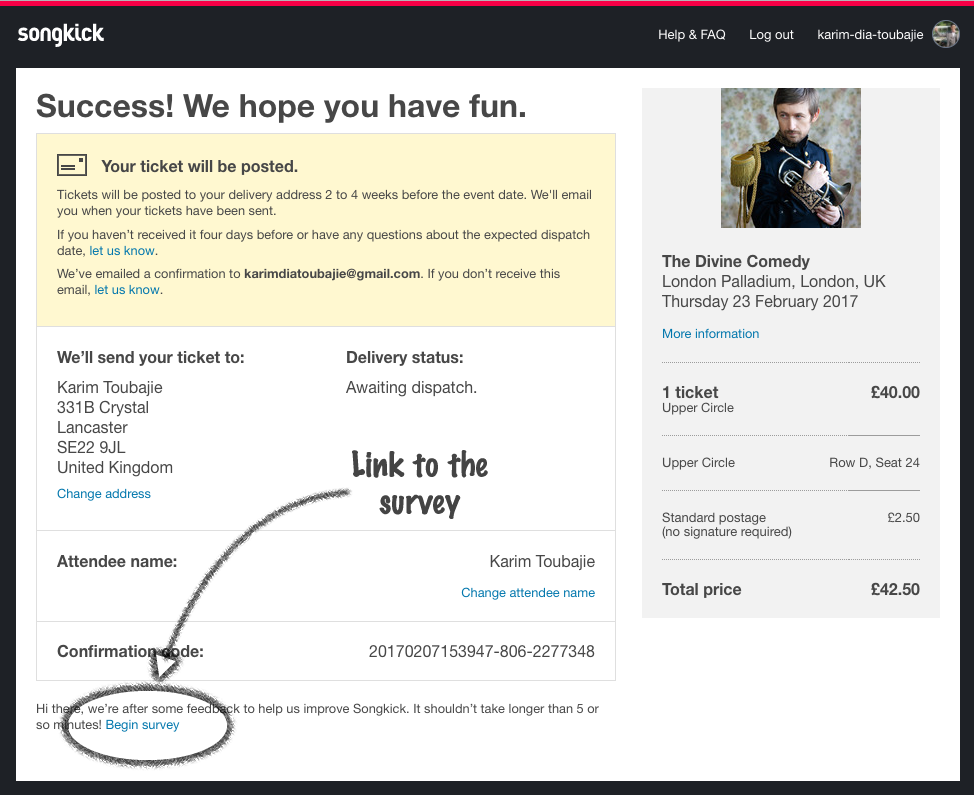
Designing the survey
The survey was created in Polldaddy and designed to help answer the research brief. Questions in the survey included:
- How did you first hear about the concert? Better understand how they become aware of a concert.
- Walk us through the timeline from first hearing about the concert to buying the tickets. Dig into their user journey between awareness and purchase and a lot of great insights come out of it.
- On a scale of 1 to 10, how excited were you when you first heard about the concert? Gather a basic understanding of their emotions at the time of awareness.
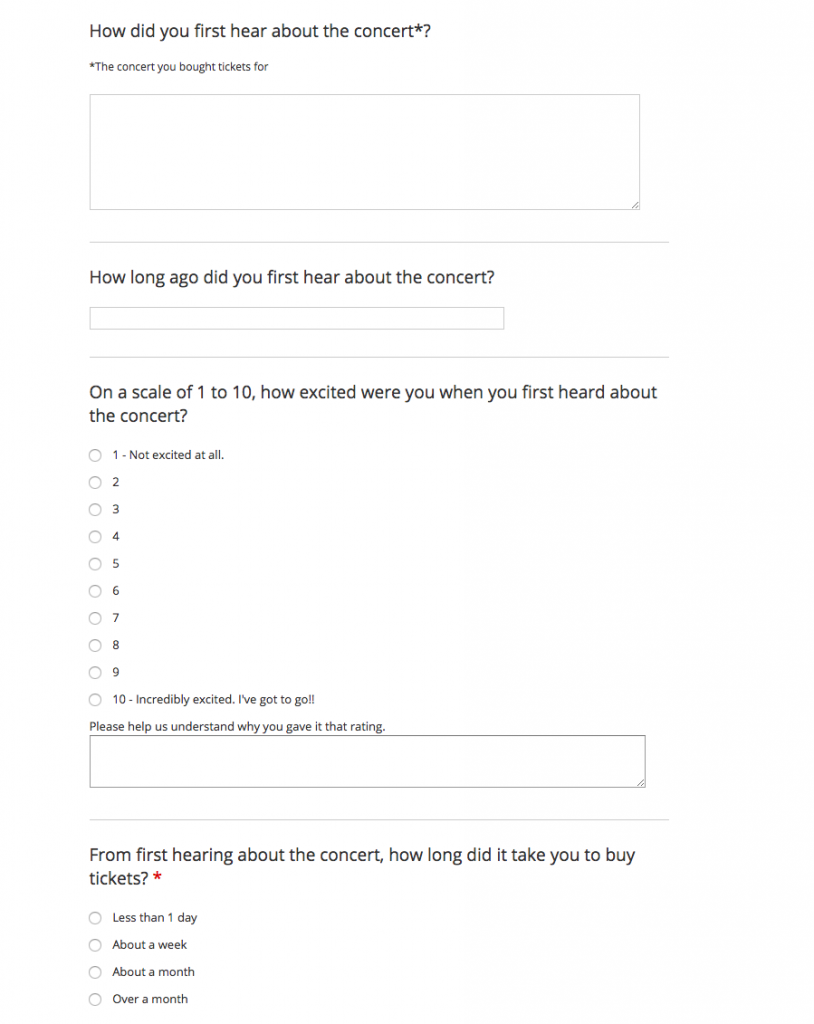
Codifying the survey responses
This is always one the most time-consuming parts of the process but it pays dividends in the long term. For each respondent, the responses were read and then codified (tagging / labelling) so that high-level quantitative groups and totals can be identified. This was in a giant Google Docs Spreadsheet so that it could be shared wand collaborated on by other members of the team.
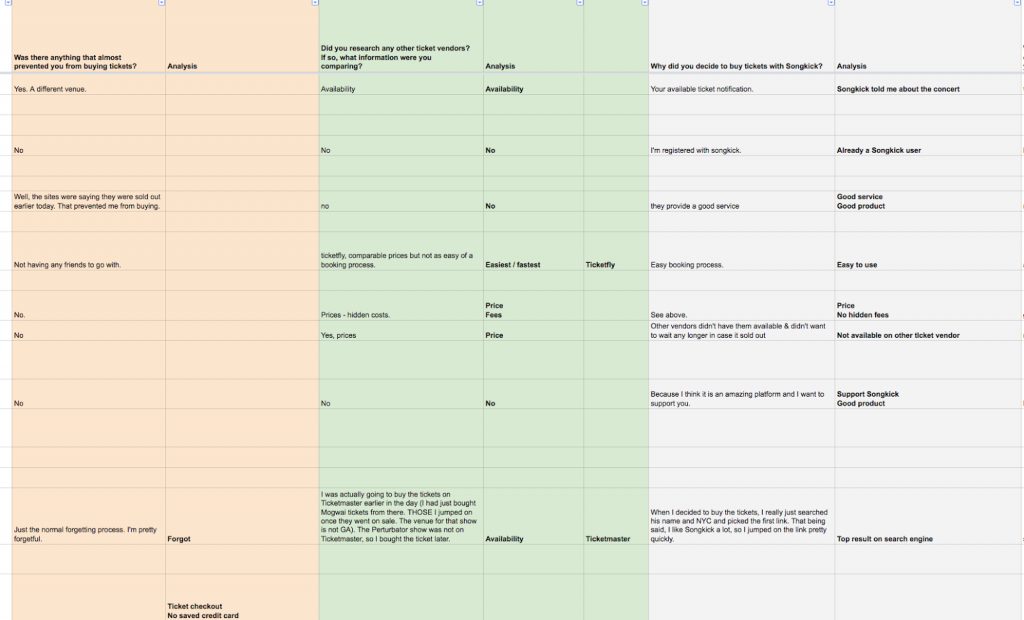
Identifying common behavioural attributes
Once we’d analysed thousands of responses we were able to start identifying patterns in behaviour. This included the attributes which seemed to drive certain ticketing behaviours and included things like the following:
- Location; the location of fans affected their behaviour predominantly for those in cities with strong concert economies versus being far away.
- Age; age was a factor for the young (usually under 18) and older fans (over 60). Younger fans did not have access to credit cards and needed parental permission. Older fans said they sometimes felt out of place or couldn’t find friends who wanted to go to concerts now they were older.
- Social; some fans are happy to go to concerts alone, whilst others will only go if they have someone to go with which affects their consideration.
- Disabilities; fans with disabilities (from research – fans in wheelchairs) had very different purchase behaviours in that they often can’t use standard checkout flows and have to call up venues on the phone for assistance.
- Cash flow; many fans are waiting for payday and can’t always buy tickets as soon as they go onsale and need to wait (and hope!)
- Passion for artist;
Developing behavioural personas
We took our trusty roll of big brown paper and started writing out some draft behaviours we’d seen.
These were by no means perfect and some had overlaps. We spent some time seeing where we could consolidate our behaviours to have a shorter list.
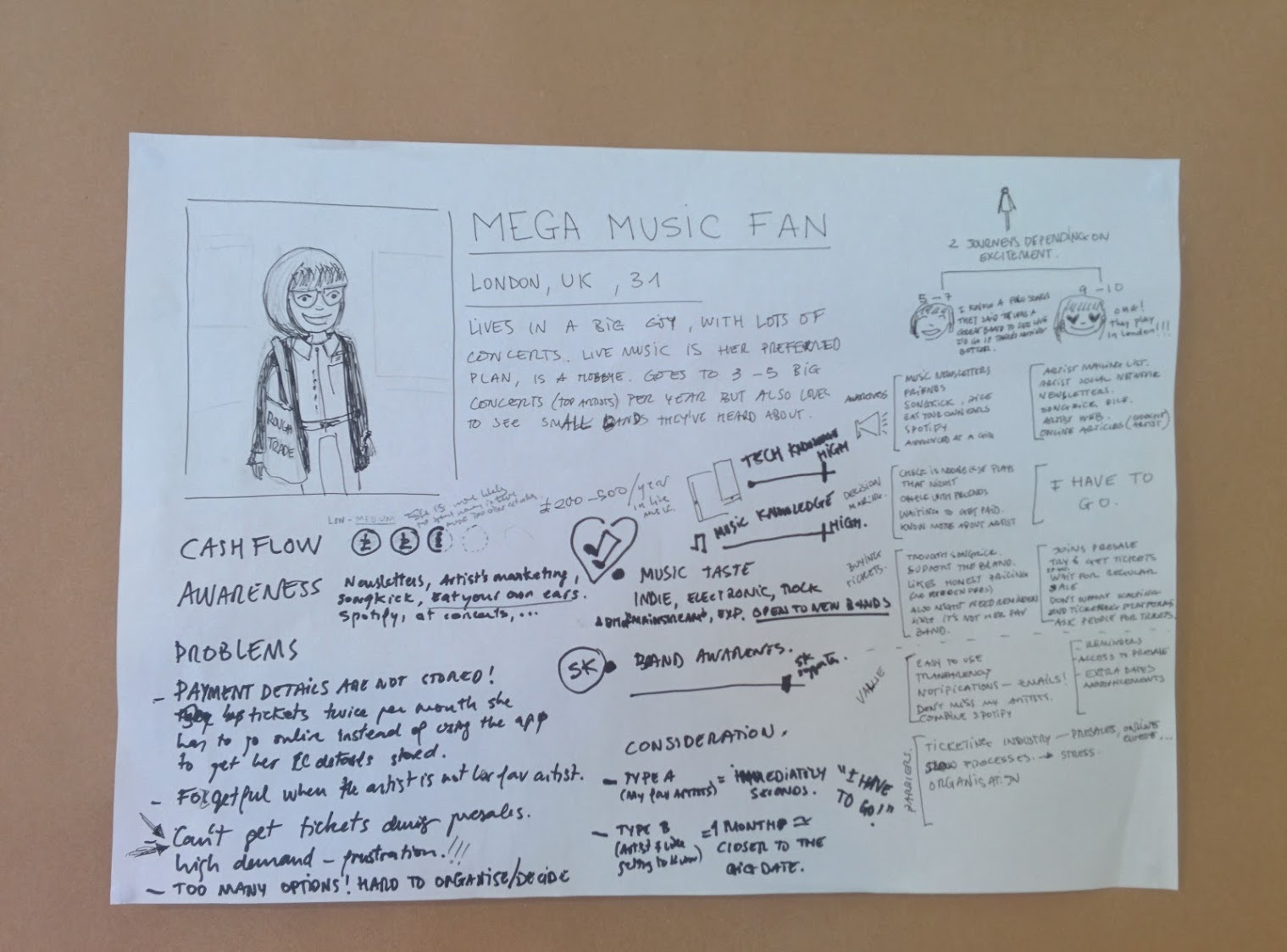
We also began mapping attributes to each persona and pulling in the other data sources for example:
From the Songkick Data Warehouse we could see if there were patterns around artist genre, spend, we pulled customer support cases and mapped them to users to further our understanding. We were also able to see how many concerts respondents were going to (from Songkick attendance data) and in some cases how much they were spending (by cross referencing ticket purchase information from Songkick Tickets. Support, Spending, Attendance.
After many iterations we finally ended up with 10 behavioural personas which felt right. To validate this was the case, we went through each survey respondent and assigned them a persona. The goal was that if it was obvious which of the personas they belonged to we had made good progress. This proved to be the case – for any respondent, we were able to categorise them under one of the personas. This allowed to flesh out the behavioural personas in more detail.
THE BEHAVIOURAL PERSONAS
Here are the final 10 behavioural personas we identified. Illustrations were by fellow Product Designer Diana Garcia.
Songkick Soldier
Songkick soldiers are strong Songkick brand advocates. They support the brand and values of Songkick and love the products and service.
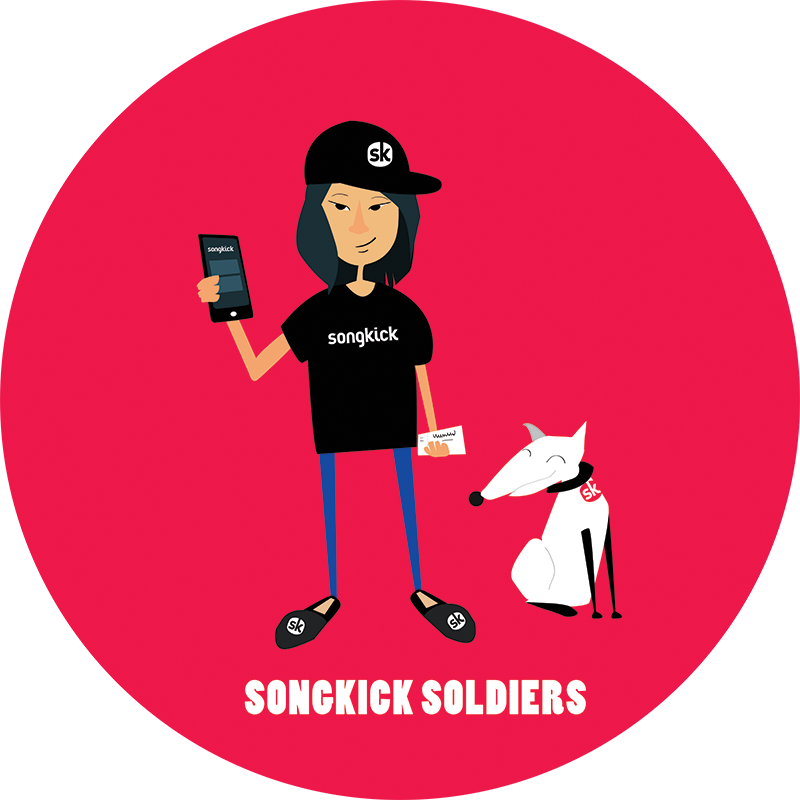
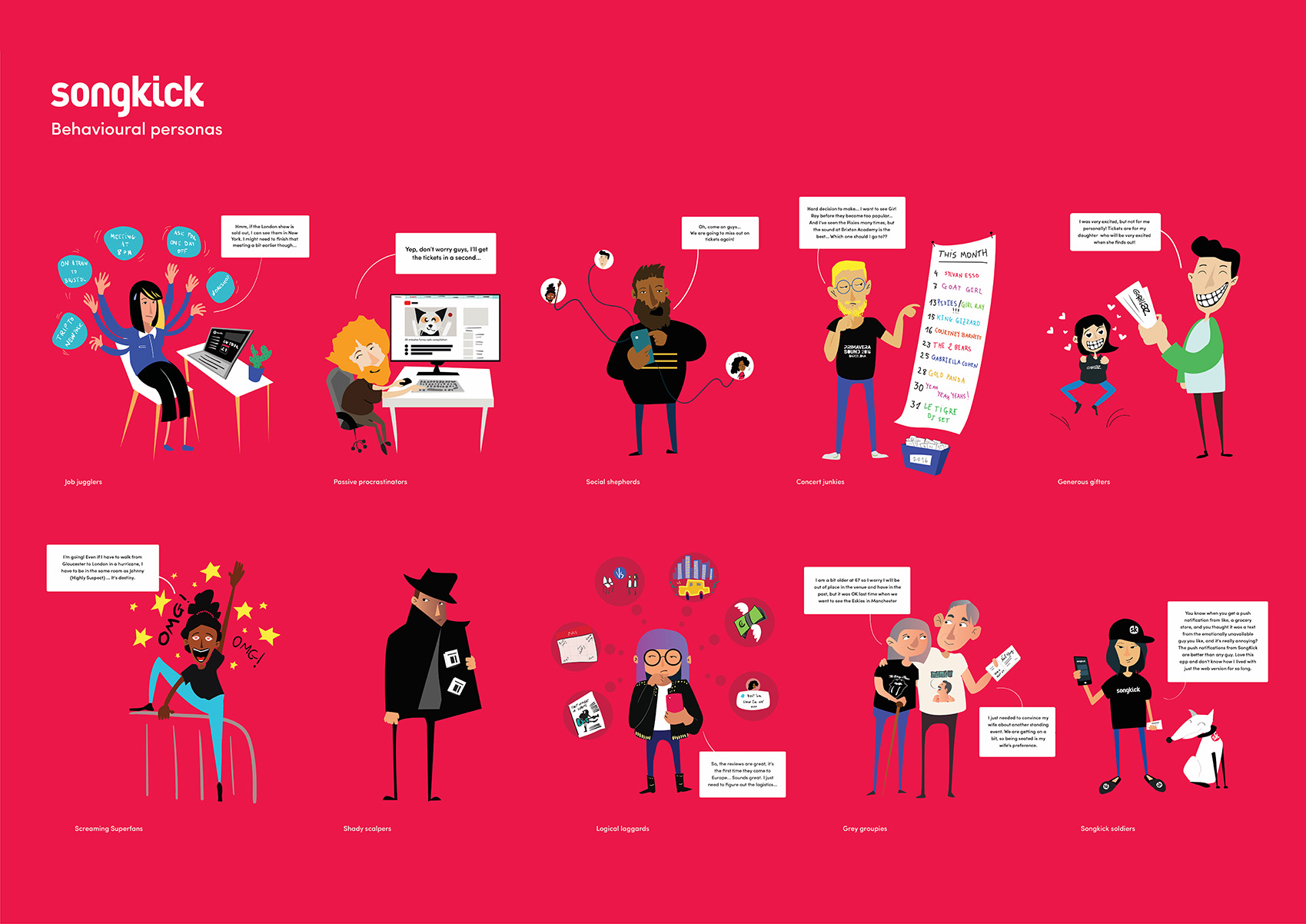
The User Needs
The purpose of the project had been to uncover customer problems and user needs, which Songkick could look to solve in innovative ways to add value to users.
We identified over 60 needs across Awareness, Consideration, Discovery, Social, Purchase which were currently unmet. Of these, some were easier to solve than others.
Examples include:
When I can’t be around for the onsale, I need to have pre-ordered tickets so that I don’t miss out.
Above: Songkick Preorder was a conceptual product I designed to allow customers to buy tickets in advance through a ballot in case they can’t make the onsale (which is a lot of people; such as teachers, bus drivers, farmers, anyone who isn’t near a computer or phone).
If demand is less than supply, customers would automatically receive tickets. If demand exceeds supply, customers go into a ballot and winners are drawn.
Educating the company
In order to make learning about customers even more fun, we put together short (~10 minutes) videos which we dubbed ‘Meet Our Customers: Season 1’ in which I narrated. We were then able to share these on Google Drive so they could be watched globally.
Above: One of the videos we produced to educate the company. This episode is about “Grey Groupies”. Credits to Diana Garcia for video production.
Additionally, we held screenings in London and New York offices so that people could watch them together.
Customer Quiz
In order to test people’s knowledge, I prepared a fun ‘quiz’ whom everyone across Songkick was invited to complete in order to ensure they knew ‘who our customers were’. The multiple choice questions were designed to educate and test peoples knowledge – it was designed and executed in Polldaddy so it could be completed globally. 70% of Songkick participated in the exam with a 99% pass rate.



